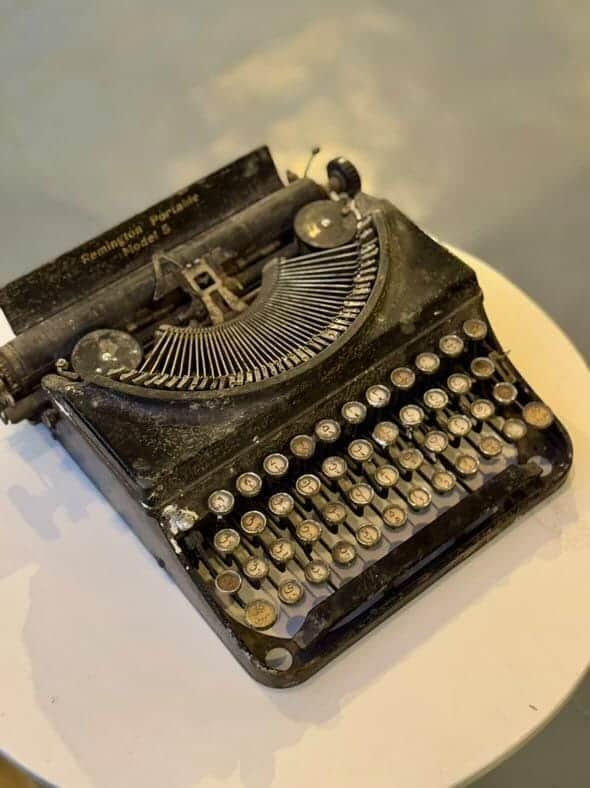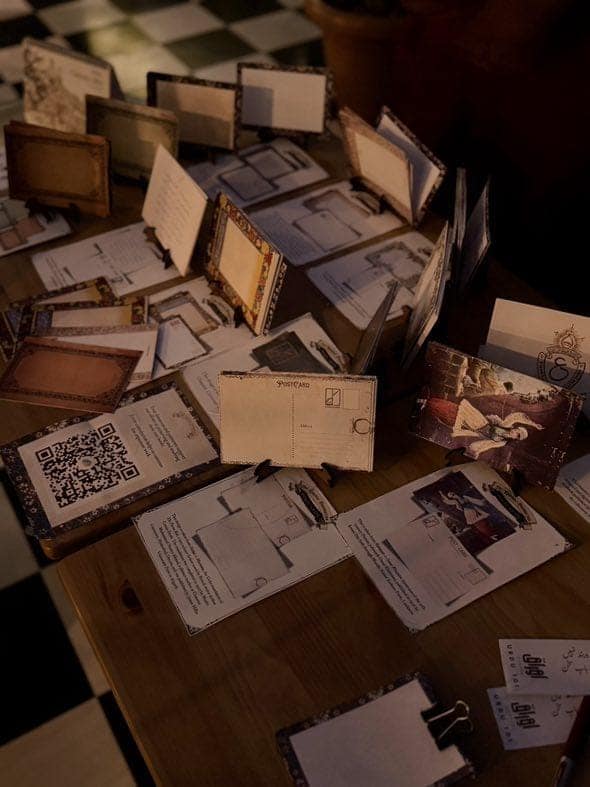Hyderabad: Book lovers and history enthusiasts in Hyderabad were in for a rare treat as The Kabikaj Foundation in collaboration with the Deccan Archives Foundation hosted an exhibition of rare books and manuscripts on Friday, February 7.
The exhibition took place at Thrivesome Cafe and Community, Jubilee Hills which showcased a curated selection of literary treasures, including a 1937 Osmania University history textbook, a 1931 Urdu translation of Goethe’s Faust, Masnavis of Maulana Rumi works from the historic Nawal Kishore Publications, and rare prints from Hyderabad’s now-extinct presses.
The exhibition was organised to commemorate the birth anniversary of renowned Hyderabad poet Riasat Ali Taaj (1930–1999). The exhibition featured a curated selection of books from his collection, preserved by his family and presented by his grandson, founder of The Kabikaj Foundation, Riasath Ali Asrar.
Rare literary gems on display at Hyderabad exhibition
The Hyderabad exhibition showcased a remarkable collection of rare books and manuscripts, including:
- A mid-1900s Urdu typewriter (Remington Portable 5), a rare artefact highlighting the evolution of Urdu script in typewriting technology
- A 100-year-old Masnavi of Mawlana Rumi, Mirat-ul-Masnavi, published by Azam Steam Press, Hyderabad
- A 1937 history textbook for matriculation, from Osmania University, featuring a 1937 South Asia map and the original Osmania University logo
- Early and first editions of Urdu translations of Goethe’s Faust and Conan Doyle’s The Poison Belt from the early 1900s.
- Rare lexicons, including:
- Farhang-e-Asafiya (1970)
- Dakhni Urdu ki Lughat (1969)
- Lughat un Nisa (1917)
- Kalaam-e-Nanak ma’ Farhang (1970)
Will exhibition society extend last date of Numaish in Hyderabad?
- Ruq‘at-e-Alamgeeri, a collection of letters by Mughal Emperor Aurangzeb, published in Hyderabad in 1911, with references to the first Asaf Jah of the Asaf Jahi dynasty.
- An 1893 Ottoman-era Arabic edition of Alf Laylah wa Laylah (The Arabian Nights), published in Egypt.
- Nawal Kishore publications, including:
- Singhasan Batteesi (a collection of Indian folklore, 1953).
- Masnavi-e-Bustan of Saadi Shirazi (a 150-year-old edition).
- Tulsi Das’s Ramayan in Perso-Arabic script, published in 1913.
- Justice Syed Mahmood’s Urdu translation of the 1872 Law of Evidence Act, published in 1893.
- Transactions of the Indian History Congress: Fifth Hyderabad Session (1941) and The Hyderabad Code (1951).
- A mid-1900s Urdu typewriter (Remington Portable 5), a rare artefact highlighting the evolution of Urdu script in typewriting technology.

Young Urdu poet Riasath Ali Asrar provided a detailed commentary on each book, guiding visitors through their historical and literary significance.
As part of the Kabikaaj Foundation’s ongoing efforts to raise funds for book preservation, a series of postcards featuring artwork and inscriptions from the rare books on display were available for purchase at the Hyderabad exhibition. Those with a passion for history, preserving culture and literature would be able to take home a unique piece of literary history which would in turn help in supporting the foundation’s vital work in archiving, digitising, and restoring rare manuscripts.

Established in Hyderabad in December 2021, The Kabikaj Foundation is dedicated to preserving and promoting rare books and manuscripts of literary, cultural, historical, academic, religious, and traditional significance, organising exhibitions and events bringing together people with similar passion.







